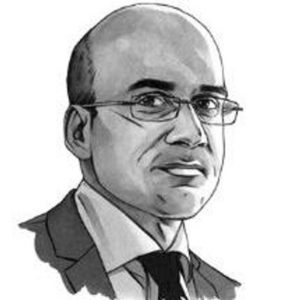From Dr Hamid Hussain
20 December 2019
I wrote a piece about recent changes in Kashmir. While working on the background, I stumbled on an interesting chapter of Kashmir & Pakistan history that I have never seen in any mainstream publication. I decided to dig a more deeper to understand it better. Following is the outcome of that exercise. I thought it was important for those interested in the history of the region. Enjoy.
Regards,
Hamid
Ahmadis and Kashmir
Hamid Hussain
“Independence of Kashmir can only be achieved by Kashmiris. Outsiders can only help in two ways; with financial support and by advocating their cause. Kashmiris should forget that outsiders will fight their war. Such outside help will not be useful; in fact, it will have opposite effect on the struggle for independence. If control of the struggle is in the hands of outsiders, it is possible that they will sell Kashmiris for their own interests. It is in the interest of Kashmiris that they should get advice as well as financial help from outsiders but never ask them to come and fight their war in Kashmir. In this case they will lose control. Long term sacrifice and not temporary emotional outburst will serve their cause and long term sacrifice can only be done by Kashmiris”. Head of Jama’at Ahmadiyya, Mirza Bashir Uddin Mahmud, 27 September 1931
Jama’at Ahmadiyya is a sect founded by Mirza Ghulam Ahmad (1835-1908). In early twentieth century, it was a small community with disciples mainly from Punjab; the birthplace of the founder. There was much hostility against the group in view of doctrinal differences especially when Mirza claimed to be Messiah and prophet. Agitation of orthodox clerics over decades finally culminated in an unprecedented act where Pakistan’s parliament declared the sect non-Muslim in 1974. This started a wave of persecution forcing many Ahmadis to leave the country and find refuge all over the world. General hostility including outright abuse against the group is at such an abnormal state that it is impossible to have any kind of meaningful discourse about the role of Ahmadis in Kashmir as well as independence movement of Pakistan. This part of the history disappeared from almost all historical works in Pakistan.
Kashmir was a Muslim majority princely state ruled by a Hindu Dogra ruler. Kashmiri Muslims were economically poor and politically powerless. Muslims of neighboring Punjab, many with Kashmiri heritage were concerned about the plight of Kashmiri Muslims. In 1911, they established All India Kashmiri Muslim Conference (AIKMC) in Lahore. This organization remained only on paper with no connection with Kashmiri Muslims and no program. In the summer of 1931, simmering discontent in Kashmir resulted in riots. On 25 July 1931, leading Muslims mainly from Punjab gathered at Simla and established All India Kashmir Committee (AIKC). The list of attendees of this meeting included literary and intellectual powerhouse Sir Muhammad Iqbal, head of Ahmadiyya community Mirza Bashir Uddin Mahmud Ahmad, leading Punjabi politician Sir Mian Fazal Hussain, Nawab of Maler Kotla Sir Muhammad Zulfiqar Ali Khan, Nawab of Kanj Pura Ibrahim Ali Khan, leading cleric of Delhi’s Barelvi community Khawaja Hassan Nizami and a former teacher of the leading orthodox Sunni seminary Darul-Uloom Deoband Maulvi Mirak Shah. Fazal Hussain wanted Iqbal to head the organization but on recommendation of Iqbal, Mirza Mahmud was unanimously chosen as president of AIKC. Muslims of different walks of life were members of AIKC including politicians affiliated with different parties, lawyers, educationalists, landed aristocracy, clerics from different schools of thoughts, journalists and businessmen. At no other time, such a consensus developed among diverse Muslim population of India. Continue reading The Role of the Ahmediyya Movement in Kashmir
